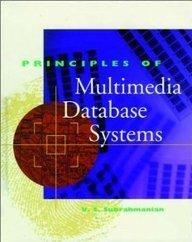



CASE STUDY: Numerical Analysis is an area of mathematics and Computer Science that finds applications in all fields of engineering and the physical sciences, but in the 21st century, the life sciences and even the arts have adopted elements of scientific computations. Ordinary differential equations appear in the movement of heavenly bodies (planets, stars and galaxies); optimization occurs in portfolio management; numerical linear algebra is important for data analysis; stochastic differential equations and Markov chains are essential in simulating living cells for medicine and biology. The overall goal of the field of numerical analysis is the design and analysis of techniques to give approximate but accurate solutions to hard problems, the variety of which is suggested by the following: Advanced numerical methods are essential in making numerical weather prediction feasible; Computing the trajectory of a spacecraft requires the accurate numerical solution of a system of ordinary differential equations. Car companies can improve the crash safety of their vehicles by using computer simulations of car crashes. Such simulations essentially consist of solving partial differential equations numerically. Sophisticated numerical analysis software is being embedded in popular software packages, e.g. spreadsheet programs. Modern business makes much use of optimization methods in deciding how to allocate resources most efficiently. These include problems such as inventory control, scheduling, how best to locate manufacturing storage facilities, investment strategies, and others. Quantitative analysts developing financial applications have specialized expertise in their area of analysis. Algorithms used for numerical analysis range from basic numerical functions to calculate interest income to advanced functions that offer specialized optimization and forecasting techniques. Different Areas And Methods under Numerical Analysis include: Interpolation/extrapolation (Newton's finite difference Interpolation, Lagrange's Interpolation, Spline Interpolation), Finite Difference Operators (Forward, Backward, Central, Average, Displacement/Shift operators), Numerical Differentiation, Numerical Integration, Solving a system of linear equations and Solving non-linear equations, etc. Since numerical methods result in approximate solutions rather than exact solutions that are normally obtained using analytical methods, there are errors associated with them. Such errors include truncation errors, rounding errors, etc. The following are two application of numerical analysis in Computer Science and Physics and Engineering (electricity). A: Computer Science Application CASE 1: CPU usage was monitored over Windows Task Manager for a period of an hour with Windows SQL server and supporting utilities running. The data values obtained were tabulated as follows; 1.5 72 Time (t) hrs 0 0.5 1.0 CPU usage (1) 80 68 88 (%) The associated Lagrange's polynomial that can be used in the approximation of CPU usage is given by n n Puce) = ti where Lk(t) = II () and f(t) Pr(t) tk-ti k=0 k=0,1+k B: Physics/Engineering (Electricity) Application CASE 2: The upward velocity of a computer controlled rocket is given as a function of time in Table below V(t) ms-10 227.04 362.78 517.35 602.97 901.67 0 10 15 20 22.5 30 T(1) S CASE 3: Faraday's law characterizes the voltage drop across an inductor as: Vi =L dl dT where Vi =voltage drop (V), L=inductance (in henrys; 1H=1 Vs/A), i=current (A), and time (s). T 0 0.1 0.2 0.3 0.5 0.7 I 0 0.16 0.32 0.56 0.84 2.0 Where L = 0.98 henries. Question Q.1 (a) A number of areas/disciplines are mentioned in the case where numerical analysis is applied. Identify and discuss one problem each in Biology and Chemistry that can be solved using numerical methods. @). NB. Each problem discussed should not exceed half a page. (b) The case study points out that numerical methods give an approximate solution rather than an exact solution to that cannot be solved analytically. Give and discuss the three(3) main features each, of approximate solutions and exact solutions. (c) Two main types of errors are mentioned in the case. These are the truncation errors and rounding errors. There are, however, other errors that may occur. These include: machine/computer errors, human errors. Discuss how these errors occur. Q.2 (a) Determine an appropriate Lagrange's polynomial that fits the values given for the Computer Science application CASE 1. (b) Use the polynomial obtained in (a) to estimate CPU usage f at t= 75minutes. (Hint I hour = 60 minutes ). Q.3 Using the application in Physics/Engineering (Electricity Problem), CASE 2 a) b) Determine the value of the velocity at t= 17s seconds with third order polynomial interpolation using Newton's divided difference polynomial method. Using the third order polynomial interpolant for velocity, find the distance covered by the rocket from t= 12s to t=17s Using the third order polynomial interpolant for velocity, find the acceleration of the rocket at t= 17s. C)










